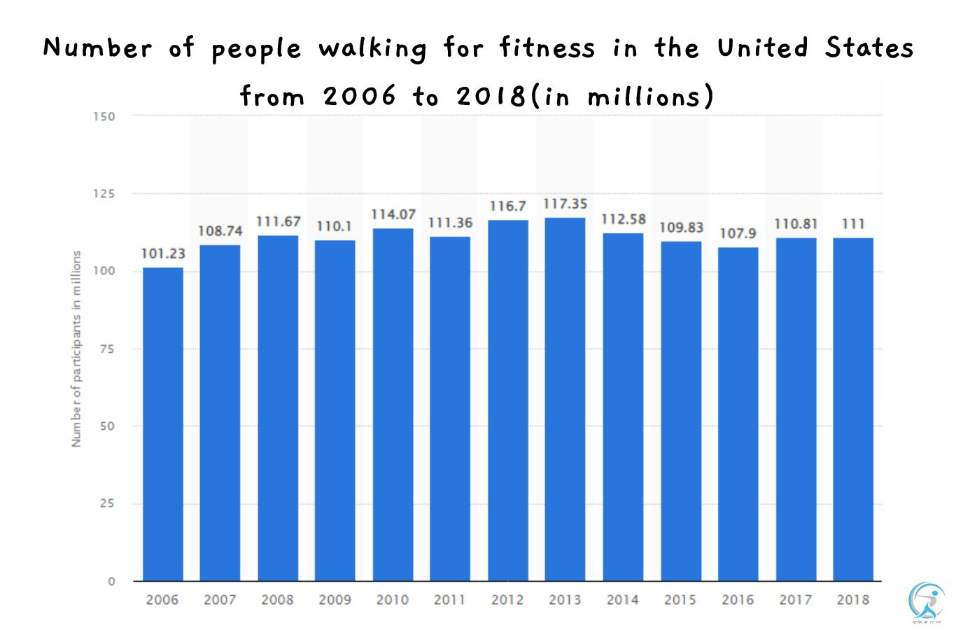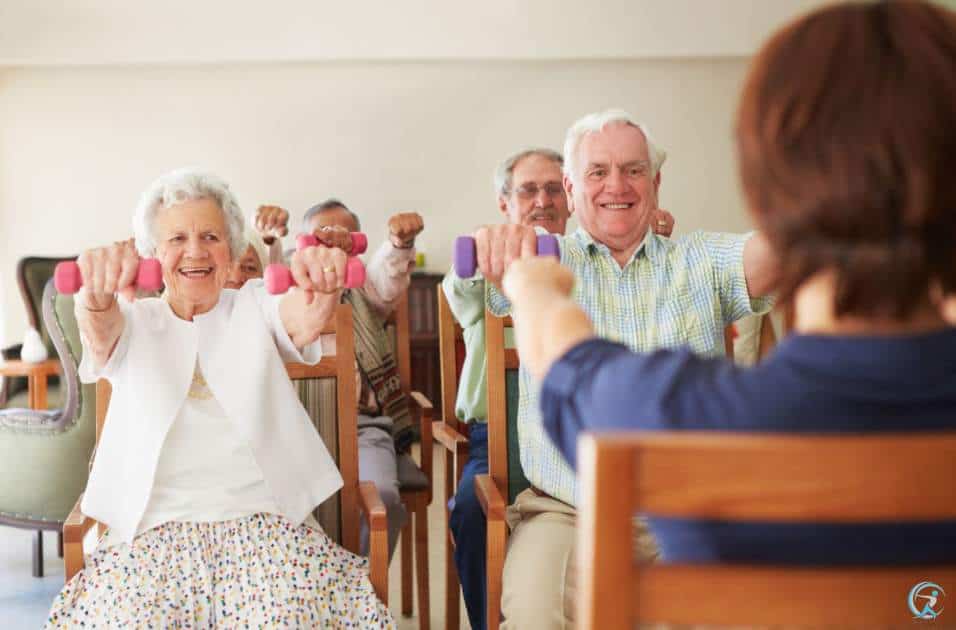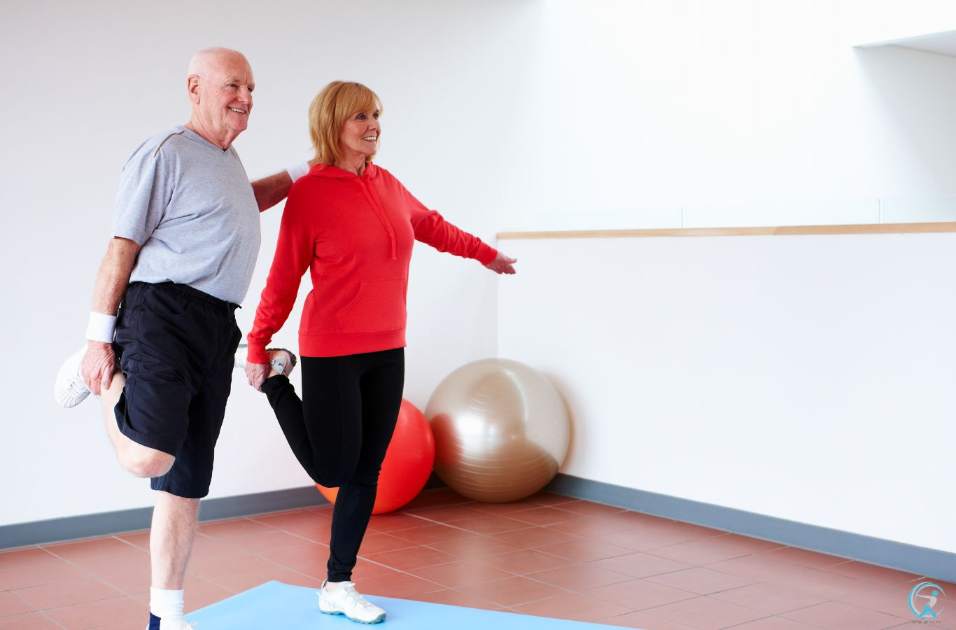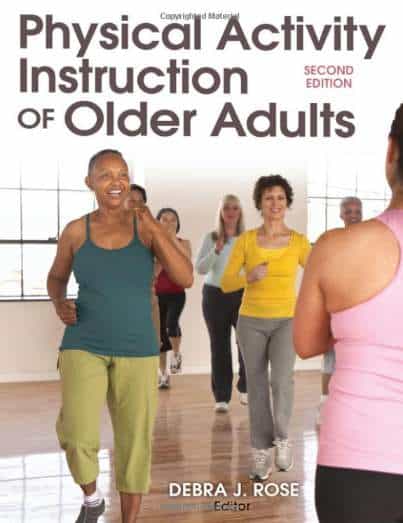Walking is among the best exercises for enhancing general health, especially as we age. We’ll go over the numerous benefits of walking for seniors.

As people grow older, mobility becomes a big issue for them. This is especially true when dealing with seniors who cannot move all that much. I have met many seniors nowadays and noticed they dislike sitting all day at home. That’s why going out for long walks is one of the health benefits of walking for seniors.
Exercise for seniors and older adults
Exercise is a great way to help people of all ages stay healthy and active. But what kind of exercise is best for seniors?
Seniors should start walking or working out on an exercise machine at home. If they want to get more serious about their workouts, they can join a gym or look into other options, such as those listed below:
Yoga is good for seniors because it helps them stretch their muscles and gain flexibility, strength, and balance. Yoga also focuses on breathing techniques that can help lower stress levels.
Tai chi. This martial art involves slow movements to improve balance, reduce stress and increase flexibility and mobility.
Pilates is a type of workout involving special equipment such as springs and resistance bands to strengthen muscles without adding bulk. It also helps improve posture and balance, which can help prevent falls among older adults with weak upper body strength from osteoporosis (bone disease).
Types of walking
Walking is a great way to stay fit, lose weight and improve your health. But it’s not just one type of walking. There are many different types of walking you can do.
The most popular forms of walking are:
Walking for fitness
This is a great way to improve your fitness level and lose weight by increasing the amount and intensity of the walks you take each week.




This statistic shows the number of people walking for fitness in the United States from 2006 to 2018. In 2018, the number of people (aged six years and older) walking for fitness amounted to approximately 111 million.
Published by Statista Research Department, Feb 22, 2021
Walking for weight loss
This is similar to walking for fitness but focuses more on burning calories through higher intensity exercise rather than building up endurance so you can walk further distances.
Stroller walking
If you have small children, taking them out in a stroller is a great way to incorporate exercise into your daily routine while spending time with them simultaneously!
Hiking
Hiking involves cardio-respiratory endurance, muscular strength, and endurance during long-distance walking or climbing over varied terrain. It also offers more exciting scenery than other walking forms but requires some training before starting so that you don’t injure yourself or others along the way!
Power walking
Power walking (brisk walking) uses the same principles as running but at a slower pace. It uses different muscle groups than running, so it’s an excellent way to strengthen your legs without putting as much stress on your joints. Power walking can also be used to warm up for other types of exercise or as an alternative form of cardio after a run or bike ride until your heart rate returns to normal.
The benefits of walking for seniors
Walking is a simple, low-impact exercise with significant health benefits for seniors. Whether you’re a senior or have an aging loved one who could use some help staying active, here are nine ways walking can improve your or their overall health.
Improves Physical Health
Walking is a low-impact exercise that is easy on the joints, making it an ideal activity for seniors. Regular walking can help improve cardiovascular health, lower blood pressure, and reduce the risk of chronic diseases such as diabetes and osteoporosis. It also helps maintain a healthy weight and improves balance and coordination, reducing the risk of falls.
Walking is a low-impact exercise that seniors can benefit from.
It is a low-impact exercise that seniors can benefit from. Walking is easy on the joints, so it doesn’t put as much pressure on them as other exercises like running or jogging. It’s also easy to do and fits into any busy schedule. You can walk alone or with friends, indoors or outdoors—whatever you prefer! It’s easy on your body and won’t cause injuries or soreness the next day. Walking also burns calories and improves cardiovascular health, which can help reduce the risk of heart disease, stroke, and diabetes.
Walking is an activity you can do almost anywhere—indoors or out—and requires no special equipment or training. You don’t even have to walk fast or far to get benefits; just 10 minutes a day of moderate-intensity walking can lower blood pressure and increase HDL (“good”) cholesterol levels. If you’re overweight and sedentary, start with five minutes each day and gradually build up to 30 minutes daily, at least five days per week.
Walking reduces your risk of falls.
An older adult with a history of falls or impaired mobility has an increased risk of falling. Walking is a weight-bearing activity and can increase your risk of injury if you do not exercise caution. However, walking is also considered a low-impact exercise that can reduce fall risk by strengthening muscles in the lower body and improving balance.
Studies have shown that regular walking may reduce the number of falls older adults experience while reducing their fear of falling. Not only does walking help with balance and flexibility, but it also helps prevent bone loss, which will help keep you upright!
Walking improves your circulation and heart health.




- Walking is an aerobic exercise. As a result, it increases blood flow to the heart and helps lower blood pressure.
- Walking increases the flexibility of the blood vessels and reduces the risk of heart disease.
- The increased blood flow caused by walking allows more oxygen-rich blood to reach your muscles. This leads to improved muscle tone and strength, which can help you feel more relaxed when resting or sleeping at night.
- Walking also positively affects cholesterol levels: it reduces LDL cholesterol (the bad kind), while increasing HDL cholesterol (the good kind).
Walking improves lung function.




The lungs are one of the most important organs in the body. They are responsible for breathing and can affect health in many ways.
According to a study published by the American Physiological Society’s Journal of Applied Physiology, walking regularly improves lung function by making breathing easier. The study involved ten healthy young adults who were given breathing tests before and after walking on a treadmill at a moderate pace for 30 minutes, three times per week for six weeks. After completing that training, participants performed another set of walking tests while wearing an oxygen mask over their faces (a measure used to simulate high-altitude conditions).
The researchers found an improvement in both tidal volume and respiratory frequency when participants walked faster for shorter periods than slower paces and longer durations—indicating increased lung capacity due to improved fitness levels through aerobic exercise like walking.
Walking boosts cognitive function.




Walking is one of the best exercises for seniors. Not only does it help you stay fit, but it also boosts cognitive function and brain health. Walking improves memory and concentration; increases blood flow to the brain; builds up new brain cells; improves connections between nerve cells in your brain; helps maintain a healthy weight by burning calories; reduces stress levels, which is essential when it comes to preventing depression; and decreases the risk of Alzheimer’s disease or other types of dementia by improving oxygenation within the brain.
The reason why walking helps improve cognitive function so much?
First, because it’s an aerobic exercise (meaning your heart rate will rise), which helps improve oxygen flow throughout your body—this means that more oxygen gets into your brain as well, allowing you to think clearer than before!
Secondly, because walking burns calories, if you want to eat fewer meals but still want good nutrition, try adding extra walks into each day instead!
Thirdly, walking may seem like a low-impact activity compared with jogging or running down stairs backward while juggling knives in each hand (which would probably qualify as high impact).
Just because something doesn’t feel physically strenuous doesn’t mean it isn’t doing anything physically beneficial—walking can be just as effective at improving cardiovascular fitness levels as other forms of exercise, such as jogging around campus three times every morning before breakfast without stopping once during those 15 minutes spent on campus prepping for class with coffee from Starbucks.
Walking controls your blood pressure.




As you age, it’s normal to feel your body slowing down. The good news is that research shows that walking can be just as effective at controlling your blood pressure as medication!
The ability to control blood pressure is essential for seniors, as high blood pressure can lead to heart disease and stroke. Walking regularly for just 30 minutes a day can lower your risk of developing these conditions by up to 60%.
Not only does walking help you control your blood pressure, but it also helps improve many other aspects of your health:
- It reduces stress levels (which in turn helps improve sleep quality).
- It reduces anxiety and depression symptoms (which further improves sleep quality).
- It improves moods by releasing endorphins into the brain-these are natural feel-good chemicals that make us happy! This will help us feel happier during our day-to-day activities too; this makes us more motivated, which improves productivity levels too.
Walking maintains your weight (or helps you lose weight).




Walking is one of the most effective forms of aerobic exercise, which can help you burn many calories. By walking at a moderate pace for an hour will burn about 150–250 calories. You can use that number as motivation to keep going and increase your walking speed or distance once you get used to walking regularly!
Walking will increase your metabolism and enhance muscle mass and strength. This works out great because as we age, our muscle mass tends to decrease naturally (called sarcopenia), making it harder for us to perform daily tasks like climbing stairs or carrying groceries up from the car. Increasing your muscle mass through regular exercises—like walking—you’ll be able to do these things more easily later in life when necessary.
Walking strengthens your muscles and bones.




When you walk, your body burns calories, which causes the muscles and bones to become stronger.
Walking is one of the best exercises to help build and maintain muscle mass. As we age, our muscles naturally deteriorate due to a lack of use. However, when we regularly walk on a treadmill or outside with proper shoes, we can prevent this by exercising our leg muscles regularly. This will also improve circulation and increase blood flow through your veins and arteries.
A good way to build up strength in your legs is by doing squats while holding weights while standing on an elevated surface like a step stool or stair railing. Another exercise that works great for building up strength in the legs is lunges with weights on either hand’s side.
Additionally, suppose you have access to a gym. In that case, many machines are available to work out all body parts, including those critical ones needed for walking, such as arms, shoulders, back, glutes, calves, etc..
Walking improves your balance and flexibility.




Walking is an excellent way to improve your balance and flexibility. As you age, the risk of falling increases, so it’s important to improve your balance and flexibility as soon as possible.
The more active you are, the better off your body will be. Walking helps build muscles in your lower limbs and gluteal region that support good posture and movement. This helps with balance and keeps both knees healthy!
Walking can also help with spinal health by improving overall body awareness while providing a low-impact workout that strengthens core muscles like the gluteus maximus (the largest of three muscles in our buttocks). The added benefit of improved posture makes this exercise even more beneficial for those who have suffered from chronic back pain for years or have been diagnosed with osteoporosis (brittle bones).
Additionally, walking improves circulation throughout our bodies because our hearts move faster than usual during this activity—which means more oxygen gets pumped into all parts of us simultaneously! Because oxygenated blood delivers nutrients throughout our bodies’ systems much better than non-oxygenated ones do, we’ll feel less tired after completing this daily practice instead of feeling drained after just one hour spent sitting down doing nothing except watching TV shows online on Netflix, etc.
Provides Social Interaction
Walking can be a great way to stay connected with friends and family and meet new people. Joining a walking group or club can provide social interaction and a sense of community, which can benefit mental and emotional health.
So how much walking should seniors do?
Seniors need to be physically active. The Centers for Disease Control and Prevention recommend that adults ages 65 and older get at least 150 minutes of moderate-intensity aerobic activity every week — 30 minutes on most days — and muscle-strengthening activities at least two days a week.
But that’s a lot to ask of people with mobility issues or chronic health conditions that make exercising difficult.
It depends on their health status. For example, if you have heart disease, diabetes, or high blood pressure, you should consult your doctor before starting an exercise program. Some medications can interact with exercise and cause adverse reactions. But even if you’re healthy enough to exercise without medical supervision, experts recommend starting slowly — at least 10 minutes per day — and increasing gradually over time as your fitness level improves.
Physical Activity Instruction of Older Adults




Sub TitleSecond Edition
by Debra J. Rose
- • Part I: Psychosocial and cognitive benefits derived from regular physical activity.
- • Part II: Conducting pre-exercise health screenings and assessments.
- • Part III: Emphasizes programming principles and training methods that will facilitate the development of well-rounded and effective exercise programs.
- • Part IV: Focuses on teaching, motivation, communication, and leadership skills.
Physical Activity Instruction of Older Adults, Second Edition, offers students and fitness professionals a contemporary approach that embraces a comprehensive wellness framework for designing health promotion and physical activity programs for older adults.
Physical Activity Instruction of Older Adults Second Edition
by Debra J. Rose (Author)
Start walking now!
If you are a senior and have been thinking about starting to walk, now is the time. Now is the time if you are a youngster and want to get your body moving.
Walking is one of the easiest and most enjoyable ways to stay fit. It’s also good for your health because it helps prevent heart disease, strokes, diabetes, cancer, and depression.
According to David Daleske, MD, medical director at the Heart & Vascular Institute at St. Joseph Hospital in Orange County, Calif., walking is a great way to start an exercise program since it requires no special equipment or equipment training.
But if you are looking for a way to get started that doesn’t involve making a big commitment, here are some ideas:
1. Start with walking, which is low-impact and easy on your joints. It’s also an easy way to get into the habit of moving more.
2. Walk with a friend or family member. You’ll be more likely to stick with it if someone is counting on you to show up!
3. Park farther away from where you need to go and walk the rest of the way (even if it’s just around the block). This works even better if you can use stairs instead of elevators or escalators at work or in stores—something I always try to do when possible!
4. Set aside time each day for some physical activity—even if it’s just walking around your neighborhood or doing stretches while watching TV at night (or both!).
FAQ about Health Benefits of Walking for Seniors
Walking can benefit seniors because it improves their physical and mental health.
A 70-year-old man can walk for about an hour without getting tired. He can walk longer if he starts walking earlier in the morning.
For health reasons, seniors should walk at least 30 minutes each day. Walking helps prevent heart disease, diabetes, stroke, osteoporosis, depression, obesity, and cancers.
Walking is an excellent form of physical activity for older people because it can be done at any pace without special equipment. However, if you plan to walk more than three miles weekly, talk with your doctor first.
Your body will start to slow down and become less efficient. You may also experience some memory loss.
A 75-year-old woman can walk about 1 mile per hour for an entire day. She will be able to cover approximately 3 miles.
You’ll be able to lose weight and burn calories.
Conclusion
We’ve talked about some of the best ways to get started with walking and shared tips on making it easier. Now it’s time to go out there and start walking! Even if you don’t feel like it today, have a bad knee, or barely walk, you can still do this. Just take it slow, take breaks when needed, keep your mind focused on how good this feels (because it does!), and stay safe. You might even want to resolve yourself: Every day, I walk for 45 minutes and then write about my experience in my journal or tell someone else about it, so they know what getting fit looks like!
Alex is a fitness aficionado, empowers others towards healthier, active lives through small, sustainable changes for lasting results. Visit Gearuptofit.com for insightful tips and resources to enrich a balanced lifestyle.